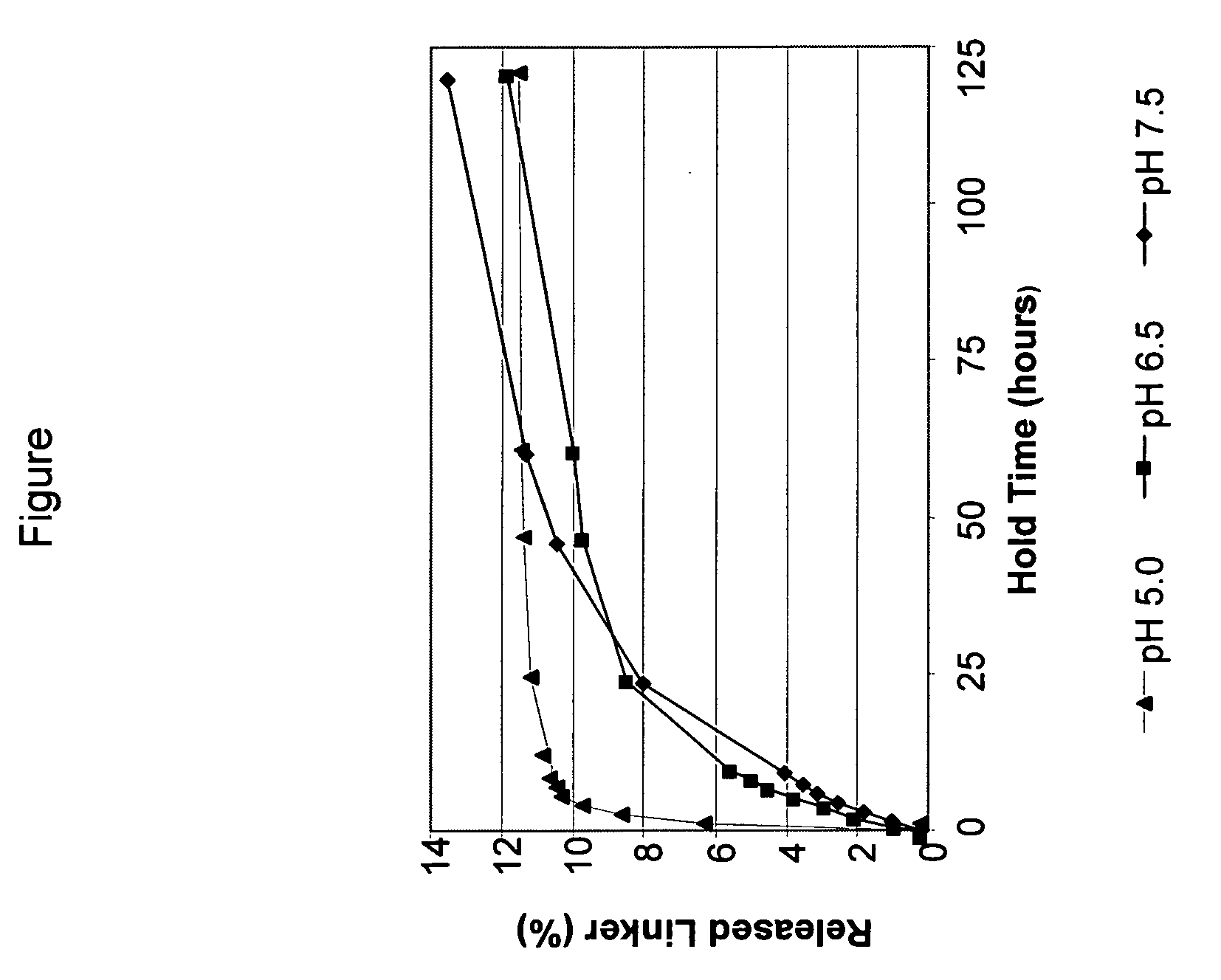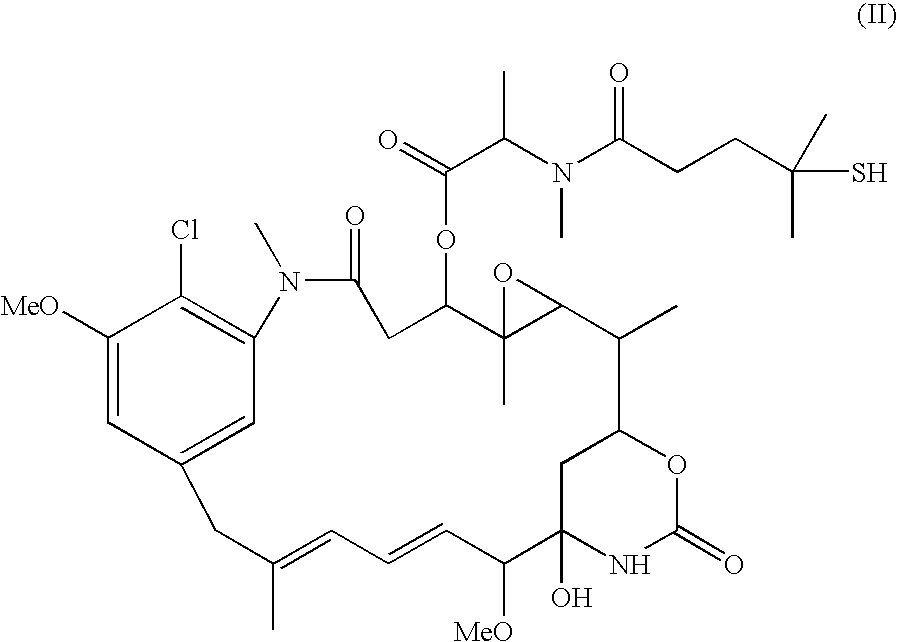Process for preparing stable drug conjugates
a technology of conjugates and stable drugs, applied in the field of conjugate preparation, can solve the problems of unstable conjugate derivatives generated with hydroxysuccimide esters, slow release of drug from the conjugate, and limited current methods,
- Summary
- Abstract
- Description
- Claims
- Application Information
AI Technical Summary
Problems solved by technology
Method used
Image
Examples
example 1a
[0097] This example demonstrates a process of preparing a conjugate comprising an antibody chemically coupled to a drug, which includes a holding step performed after modification of the antibody with a bifunctional crosslinking reagent and before conjugation of the antibody to the drug.
[0098] The huN901 monoclonal antibody (final concentration 8 mg / mL) was incubated with N-succinimidyl 4-(2-pyridyldithio)pentanoate (SPP) (7 fold molar excess of SPP) for approximately 100 minutes at room temperature in 50 mM potassium phosphate buffer (pH 6.5) containing 50 mM NaCl, 2 mM EDTA, and 5% ethanol. The reaction mixture was purified using a column of SEPHADEX™ G25F equilibrated and eluted in the aforementioned potassium phosphate buffer lacking ethanol.
[0099] Samples of modified antibody were held for up to two weeks at 4° C., then conjugated with the maytansinoid DM1 (1.7 fold molar excess over linker) dissolved in dimethylacetamide (DMA, final concentration is 3%). After overnight incu...
example 1b
[0101] This example demonstrates the beneficial impact of a holding step at pH 5.0 relative to pH 6.5 and 7.5 after modification of an antibody with a bifunctional crosslinking reagent and before conjugation of the modified antibody to the drug.
[0102] The huN901 monoclonal antibody (final concentration 8 mg / mL) was incubated with N-succinimidyl 4-(2-pyridyldithio)pentanoate (SPP) (5.6 fold molar excess of SPP) for approximately 180 minutes at 20° C. in 50 mM potassium phosphate buffer containing 50 mM NaCl, 2 mM EDTA, and 5% ethanol, at pH 7.5. The reaction mixture was split into three parts, and each part was purified using gel filtration columns packed with SEPHADEX™ G25 (NAP 10 column obtained from Amersham Biosciences) and equilibrated and eluted with three different buffers. The first column was equilibrated and eluted with a 50 mM potassium phosphate buffer (pH 7.5) containing 50 mM NaCl, and 2 mM EDTA. The second column was equilibrated and eluted with a 50 mM potassium phos...
example 2
[0106] This example demonstrates a process of preparing a conjugate comprising an antibody chemically coupled to a drug, which includes a holding step performed after modification of the antibody with a bifunctional crosslinking reagent and before conjugation of the antibody to the drug.
[0107] A solution of huC242 antibody (16 mg at 8 mg / mL) in a buffer at pH 6.5, consisting of 50 mM potassium phosphate, 50 mM sodium chloride, and 2 mM ethylenediaminetetraacetic acid (EDTA) disodium salt, was treated at ambient temperature with a solution of SPP (10 mM stock in ethanol, 6.5 molar excess, final ethanol concentration was 5% v / v). The reaction mixture was incubated at ambient temperature for 90 minutes. A portion (0.4 mL) of the mixture was then passed through a gel filtration column packed with SEPHADEX™ G25 (NAP 10 column obtained from Amersham Biosciences) to remove any unreacted SPP and other low molecular weight material. Elution with the above buffer gave the modified antibody (...
PUM
| Property | Measurement | Unit |
|---|---|---|
| Temperature | aaaaa | aaaaa |
| Temperature | aaaaa | aaaaa |
| Time | aaaaa | aaaaa |
Abstract
Description
Claims
Application Information
 Login to View More
Login to View More - R&D
- Intellectual Property
- Life Sciences
- Materials
- Tech Scout
- Unparalleled Data Quality
- Higher Quality Content
- 60% Fewer Hallucinations
Browse by: Latest US Patents, China's latest patents, Technical Efficacy Thesaurus, Application Domain, Technology Topic, Popular Technical Reports.
© 2025 PatSnap. All rights reserved.Legal|Privacy policy|Modern Slavery Act Transparency Statement|Sitemap|About US| Contact US: help@patsnap.com



